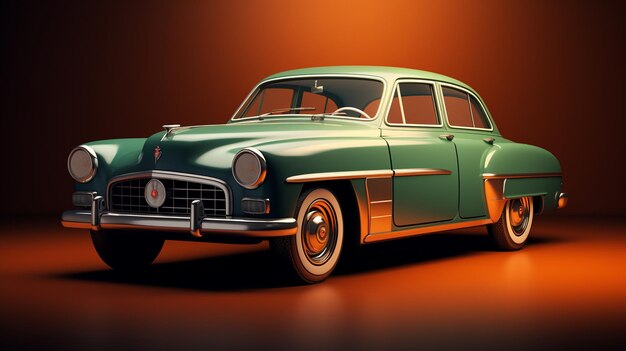
Infotainment systems have come a long way. What used to be the latest tech trend, with screens and smartphone connectivity, is now just as common in cars as cupholders and stereos. With that in mind, Ford is subtly updating its infotainment system.
Called the Ford and Lincoln Digital Experience, this new system will make its debut in the 2024 Lincoln Nautilus later this year at Ford’s headquarters in Dearborn, Michigan. While it offers improvements, it doesn’t overhaul the basics of current infotainment tech.
Ford’s message is clear: big screens are here to stay, but they’ll be packed with more functions and content. It’s becoming more evident that cars are evolving into smartphone-like devices on wheels, a direction Ford seems to be embracing.
We got to see two Lincoln Nautilus models showcasing this new system at its fullest. The Nautilus boasts a huge 48-inch display stretching across the dashboard, plus an additional smaller touchscreen. This big screen is mounted near the base of the windshield, close to the driver’s line of sight, eliminating the need for a head-up display.
This system features faster hardware and more adaptable software. Ford claims it’s up to five times faster in main processing and 14 times quicker in graphics processing compared to the current Sync 4 system. It’ll also have four times the memory, eight times the storage, and 5G connectivity. The screens will provide 4K resolution and adapt to lighting conditions for better visibility. By developing more software in-house, Ford aims for quicker feature updates and over-the-air (OTA) updates.
The Lincoln display is undeniably impressive. Unlike some automakers that use multiple screens across the dashboard, Lincoln offers a single, seamless display from one door to the other. While Ford-branded cars will have a more conventional setup with a central touchscreen and digital instrument cluster, they’ll still benefit from the same advanced hardware.
Ford is now integrating Google’s apps, joining brands like Polestar, Volvo, General Motors, and Nissan. Google Maps and Google Assistant will be the default options for navigation and voice control. Through the Google Play Store, users can download apps like Spotify directly to their cars.
Personalization is a big part of Ford’s plan with Google. Preferences and previous searches can be synced from other devices directly to the car. Drivers can then use voice commands to perform tasks like navigating home without needing to input an address.
Unlike General Motors, which is phasing out Apple CarPlay and Android Auto, Ford is keeping these options due to their popularity among users. It also supports Amazon Alexa for voice control as an alternative to Google Assistant. While Apple is expanding CarPlay’s reach to entire dashboards, Ford isn’t fully committing to this yet.
Ford sees significant value in the Play Store’s ability to add new apps directly into cars, making the experience smoother than the phone-dependent Apple CarPlay and Android Auto systems.
The new system will support various apps for entertainment, such as Amazon Music, Spotify, and Audible while driving. Video streaming through YouTube and Prime Video will be available when parked, similar to Tesla’s offerings. The Vivaldi web browser will also be accessible when parked, with Google Chrome expected in future updates. There will be options for in-car gaming as well.
These features make cars another platform for digital content, alongside smartphones, computers, tablets, and TVs—a direction Ford believes the market is heading toward.
While we didn’t get to watch a full episode of Jack Ryan, we saw an overview of the system in a stationary Lincoln Nautilus and a mock-up version for Ford vehicles.
The standout feature of the Lincoln display is its use of the panoramic format. The dashboard has been designed to spread out functions typically bundled into a single touchscreen or instrument cluster. For instance, maps can be displayed on the main screen while the audio menu appears on the lower touchscreen, each getting as much screen space as entire displays in other cars.
The Nautilus’ instrument cluster now focuses on showing essential information like speed and, if equipped, data for Ford’s BlueCruise driver-assist system. Other details, such as tire pressure and the clock, are relocated to widgets on the passenger side of the dashboard to minimize driver distraction. These widgets can be customized and are designed to be easily glanced at, much like smartphone notifications.
The larger display seems exclusive to Lincoln models, while Ford will use a simpler version with built-in Google apps and video streaming on a standard touchscreen layout. Maps will also be available in the instrument cluster, a feature other brands have had for some time.
Ford’s new infotainment tech signifies that while the development of automotive infotainment has matured, there are still innovative improvements left to be made. Ford predicts that customers will prefer downloading and using in-car apps from the Google Play Store rather than relying on phone syncs. It’s also betting on a growing demand for in-car content streaming while parked.
Ford’s market research supports these decisions, but the real test will be customer response when the features are rolled out. The big screen and user-friendly interface will help Lincoln compete with brands like Audi, BMW, and Mercedes-Benz, but it’s crucial for Ford to integrate this tech effectively into its broader range of vehicles.
Ultimately, these new interfaces need to be effective not just when the car is parked or in demo mode but in everyday driving conditions. Cars are still primary vehicles for driving, even with all the added smartphone-like features.